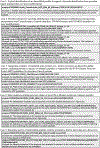Universal Spectrum Identifier for mass spectra
- PMID: 34183830
- PMCID: PMC8405201
- DOI: 10.1038/s41592-021-01184-6
Universal Spectrum Identifier for mass spectra
Abstract
Mass spectra provide the ultimate evidence to support the findings of mass spectrometry proteomics studies in publications, and it is therefore crucial to be able to trace the conclusions back to the spectra. The Universal Spectrum Identifier (USI) provides a standardized mechanism for encoding a virtual path to any mass spectrum contained in datasets deposited to public proteomics repositories. USI enables greater transparency of spectral evidence, with more than 1 billion USI identifications from over 3 billion spectra already available through ProteomeXchange repositories.
Figures



References
Publication types
MeSH terms
Grants and funding
- R24 GM127667/GM/NIGMS NIH HHS/United States
- P41 GM103484/GM/NIGMS NIH HHS/United States
- R01 GM087221/GM/NIGMS NIH HHS/United States
- R01 LM013115/LM/NLM NIH HHS/United States
- WT_/Wellcome Trust/United Kingdom
- 208391/Z/17/Z/WT_/Wellcome Trust/United Kingdom
- BB/S01781X/1/BB_/Biotechnology and Biological Sciences Research Council/United Kingdom
- BB/P024599/1/BB_/Biotechnology and Biological Sciences Research Council/United Kingdom
- BB/N022440/1/BB_/Biotechnology and Biological Sciences Research Council/United Kingdom
- BB/N022432/1/BB_/Biotechnology and Biological Sciences Research Council/United Kingdom
LinkOut - more resources
Full Text Sources

